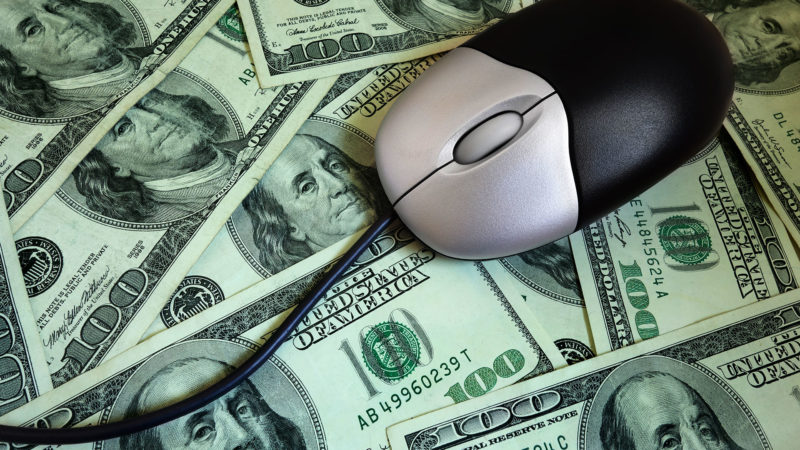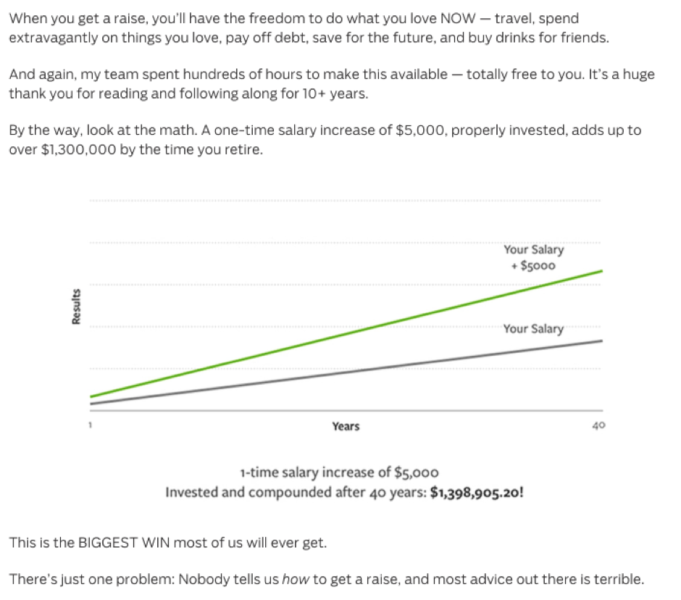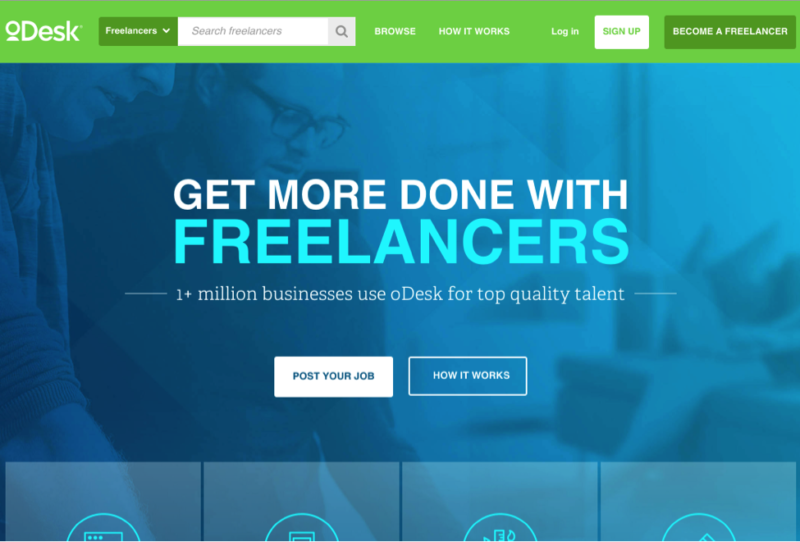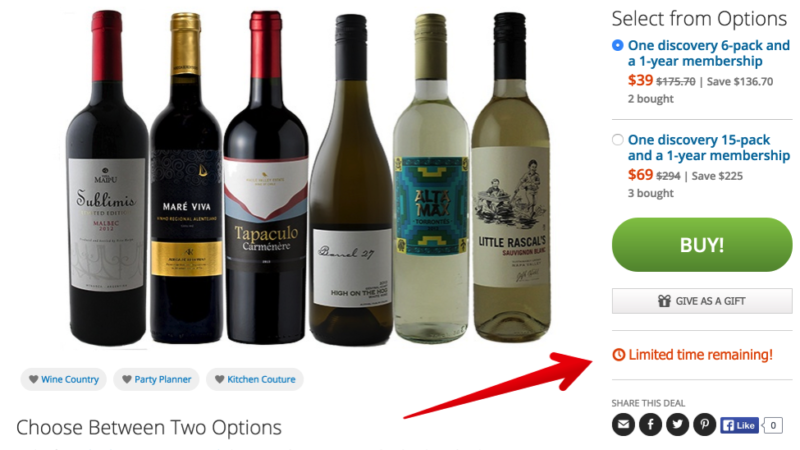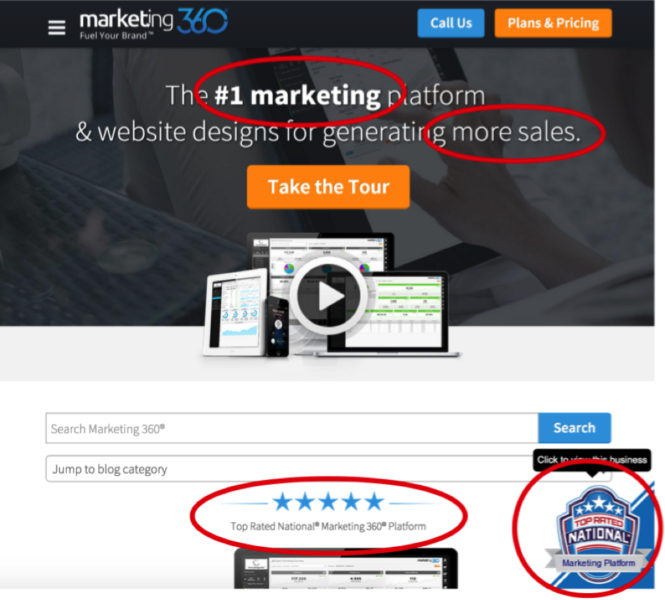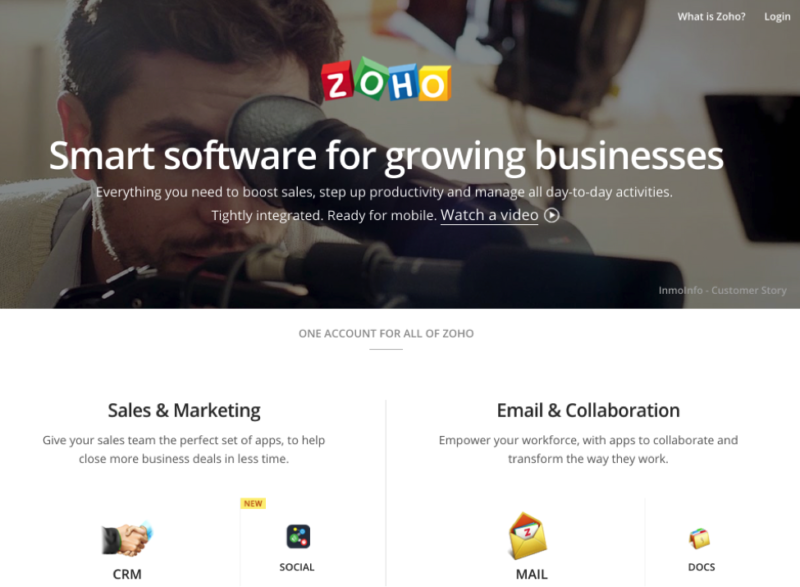How To Sell To The Competitive Buyer
Competitive buyers are shrewd and discriminatory, but there are ways to win them over. Columnist Jeremy Smith explains how.
If you wanted to sell me a car, you’d need to know a few things about me.
- It would help to know whether or not I have a driver’s license. (I do.)
- It would help to know whether I have any mental or physical handicaps. (I don’t.)
- It would help to know whether I’m bankrupt or flush with cash. (Secret.)
- It would help to know if I’m a safe driver or a “Fast and Furious” stunt driver wannabe. (No comment.)
Beyond that, it would help to know if I prefer vinyl or leather, manual transmission or automatic, SUV or sports car, and on and on the list goes.
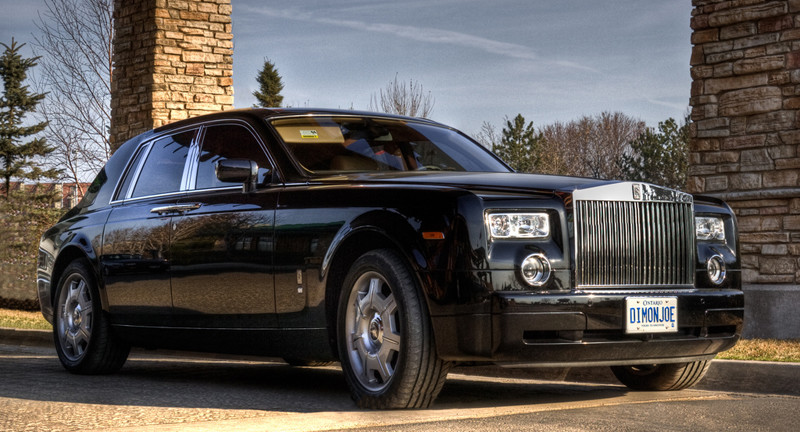
Photo by Flickr user Billy Wilson and used here via Creative Commons license.
Not my real car. (I have the same model in white…j/k)
The more you know about a potential customer, the better you’re able to sell to that customer. Successful salespeople speak to a customer’s needs, wants, passions and proclivities.
That’s why you need to know about competitive buyers.

Grand Theft Auto image via Rockstar Games.
Competitive buyers only rarely blow things up, but they always look cool doing it.
The Four Types Of Buyers
In total, there are four major types of buyers in the four-modality model discussed in “Call to Action,” the book by conversion optimization guru brothers Bryan and Jeffrey Eisenberg:
- Competitive
- Spontaneous
- Methodical
- Humanistic

Source: Bryan and Jeffrey Eisenberg’s book “Call to Action“
These buyers are plotted on the y-axis (logical/emotional) and x-axis (fast/slow). While buyers may land at various plot points in the scale, most buyers tend toward one model, often dependent on the type of purchase under consideration.
Keep in mind, this model is limited in what it can describe regarding specific buyers. The modalities cannot accurately assess the behavior of buyers in every different situation or for every different product.
The modalities provide a model. They are a framework for general truths about general purchase decisions in ordinary circumstances.
Specifically, they address these two questions:
- How do most buyers approach a purchasing decision?
- How do most buyers behave during a purchase?
Like my opener about the car purchase, knowing the buyer types can help you prepare your site to receive and respond to certain styles.
Conversion optimization is the method of creating a Web experience that increases conversions. The best way of optimizing a site for more conversions is optimizing it for specific customer modalities.
Tips For Selling According To Buyer Modality
The main message I want to get across in this article is that you should try sell according to buyer modalities. There are two tips I want to provide in light of this main takeaway.
- As much as possible, try to segment your users by modality. (For insights on analytic segmentation, please refer to Avinash Kaushik’s article at Online Behavior, as well as “Segmentation for Higher Conversion Rates” and this article on segmentation techniques.)
- Always A/B test. Always. That is all.
So, what is this competitive buyer of whom I speak?
The following describes the features and characteristics of the competitive buyer, and how you can apply these characteristics to your conversion optimization methodology.
Competitive Buyers: The Smallest Buying Group
There are fewer competitive buyers than with any other buyer modality.
But just because there are fewer competitive buyers doesn’t mean that they are any less important. Nor does it mean you should place less emphasis on techniques that appeal to competitive buyers.
The same elements that appeal to competitive buyers will also appeal to other buyer modalities.
Takeaway: Even though there are fewer competitive buyers, make sure you include competitive buying motivations as part of your conversion optimization efforts. The work that you do to encourage competitive buyers will also serve to inspire spontaneous and humanistic buyers.
Competitive Buyers Buy Products To Increase Power, Productivity, Leverage, Ability
Since competitive buyers want to be better people, then you should position your products in such a way that they promise self-improvement.
For example, if you sell a SaaS (software as a service), you may be able to market it in such a way that it promises to increase the customer’s time, effectiveness, earning power, and so on.
Ramit Sethi of iwillteachyoutoberich.com is a master at this. He caters to a group of young, smart, sophisticated urbanites with the drive and potential to be more, earn more, and do more.
His content nails it with stuff like this:
Notice the “NOW” language, along with data-driven evidence.
Competitive Buyers Know When Something Is A Gimmick
You’ll pick up on techniques and tactics in this article, but be warned. Competitive buyers know when you’re being facile. They can identify sales gimmicks a mile away.
They understand the difference between fabricated data and real evidence. They know when numbers and statistics can be misrepresented and skewed. They know when they’re looking at something legit, and something false.
These people are smart. As a whole, they have more buying instincts and higher intuition levels than any other buyer modality. Competitive buyers are smart shoppers.
Competitive Buyers Are All About Results
When they make a purchase decision, competitive buyers are looking for the bottom line. They want results.
If you are trying to make a fuzzy, emotional, feel-good connection with competitive buyers, good luck with that. You’re going to go further with promising and delivering results.
You know that worn-out job requirement cliche: “results-oriented”? Yeah, well that’s the competitive buyer.
Sethi, the salesman savant who reels in competitive buyers by droves, rushes in with his example. His popup promises to give experiments “that will change your life.”
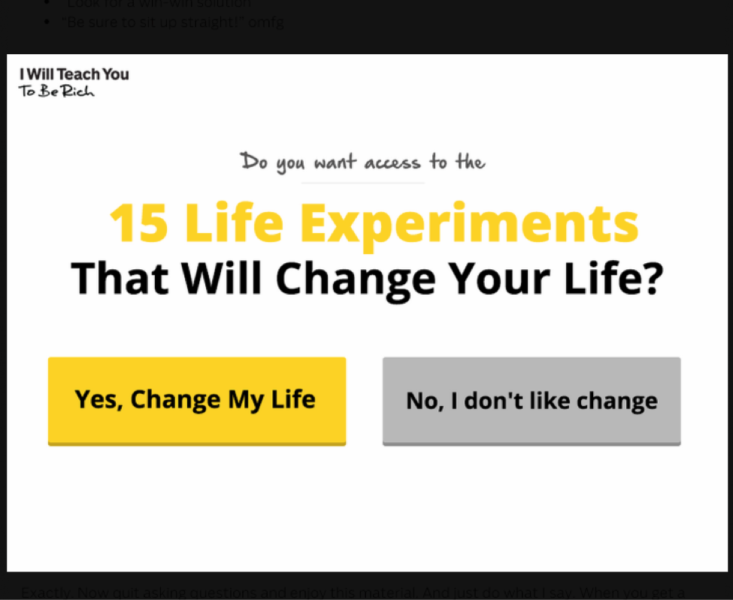
a
Change has appeal to the results-focused competitor. Change is progress. Change is good.
Competitive Buyers Are Driven People
The competitive buyer is no slouch. These are people who wake up at 4:30 a.m., run a half marathon, teach a CrossFit class, and work in their high-flying executive job until 11 p.m., sleep 20 minutes, and are ready for a new day. They are driven.
Timothy Sykes, the millionaire penny investor, speaks to the ingrained passion of the driven persona with this popup: Stop being lazy.
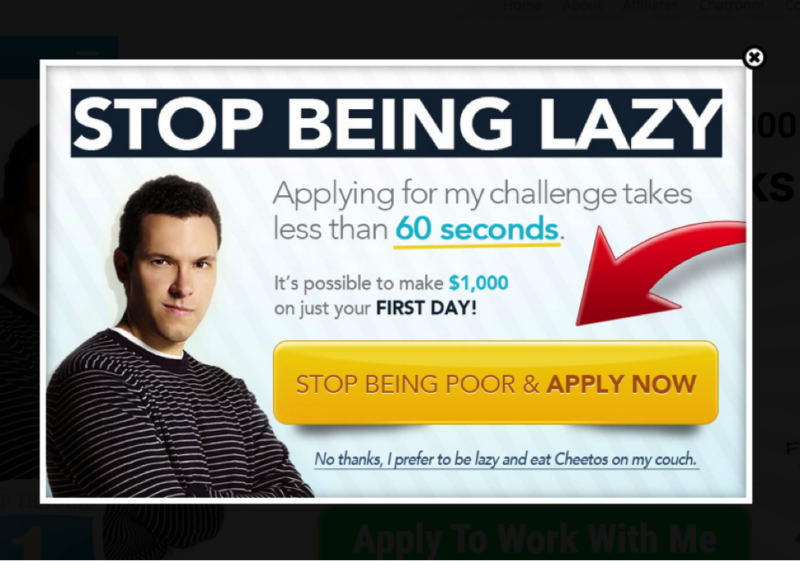
s
The only people who respond positively to that kind of rude language are people who are already predisposed not to be lazy. Thus, Sykes makes a counterintuitive appeal to the very audience that he wants to attract — highly motivated, competitive, big-potential people with passion and drive.
The marketing technique of consultant and lifestyle blogger Meg Biram fits this description. She is a driven person. She wants driven clients. The headline, ”entrepreneurs on fire,” captures her persona and flair.
Since Biram works in a consultative role one-on-one with executives and business owners, she wants to gain clients who have that results-oriented drive and make competitive decisions.
Takeaway: Competitive buyers are going to make a purchase, and they are going to make it now. They are not likely to return to a site later to complete a purchase if they find elements that are satisfactory the first time.
Competitive Buyers Operate In A Time-Conscious Way
The competitive buyer is driven by speed. The site must be fast. The checkout process must be streamlined. The conversion funnel must be short. These are people who want a quick checkout time and none of the time-wasting barriers that characterize a methodical purchase.
If the competitive buyer can’t bulldoze a barrier, she will leave the site. You lose.
Even the language of the site can appeal to a competitive buyer’s passion for saving time and getting stuff done.
Notice the headline on oDesks’s site. oDesk knows it’s dealing with entrepreneurs and business owners who don’t want to waste time. The headline is killer.
Get more done? Yes, please. And that “top quality talent” line helps, too.
Methodical buyers, by contrast, are nearly blind to the impact of time. They would rather make a slow decision, assured only by the fact that it is slow. Competitive buyers don’t care. A good decision is a fast decision.
Competitive buyers have no time or patience for broken sites, complicated checkout processes. Speed and decisiveness are in their personality and behavior.
Takeaway: Use short sales cycles, quick conversion processes, and you better make your website faster!
Competitive Buyers Respond Well To Urgency And Scarcity
Competitive buyers have their own innate sense of urgency. They’re born with it. Thus, urgency elements on your website will resonate with their desire to act quickly.
According to the urgency principle of human psychology, humans act in such a way that that they allocate time and effort to the most important actions. Urgency is what makes a buyer feel as if they must act immediately and swiftly when faced with a purchase decision. Competitive buyers are most likely to convert under the force of urgency.
The paragon of urgency and scarcity in conversion optimization is Groupon. Its entire business model is predicated upon user urgency and group buying power.
Competitive buyers respond well to urgency, because they have an internal urgent drive. Urgency and scarcity are part of their nature and decision-making style. They intuitively understand why urgency is important in a purchase.
But urgency alone does not a competitive buyer convert. You must combine the urgency with data.
Sykes provides a killer example. He goes for the competitive jugular with a one-two conversion punch that will send any competitive buyer flying to click the “buy” button.
This popup is gushing with competitive signals. First, take the headline into consideration:
- Learn — Competitive buyers want to change and improve. They want to be better than your average bear.
- $30,000 — That’s cash, and that’s a real number. Data, folks. Competitors crave data.
- 7 Days — That’s urgency. That’s next Tuesday. Yep, competitors are urgent people, and they like one-week time frames.
Notice also the “proven track record” box at the bottom of the popup — lots of nice little statistics. (I’m not exactly sure that they mean, but hey, it has a percentage symbol, right?) And that “Top Trader” bit with the big fat number one! And those news network symbols, brimming with popularity and cachet. This guy is the real deal. And so competitive buyers push to convert on Sykes’s site.
Takeaway: Encourage competitive buyers to convert by using copious amounts of urgency and scarcity.
Competitive Buyers Respond To Strong Data-Driven Language
Competitive buyers want to be persuaded by legitimate means. Legitimate means data. Legitimate means backing up claims. Legitimate means statistics, numbers, pie charts, and bar graphs. Stuff like that.
Don’t ignore the visual representation of data. A recent Cornell study found that information in ads is more persuasive when represented visually, even when the charts used are quite basic.
Takeaway: Don’t rely on your emotional language to persuade. Rely on facts. Rely on data.
They Respond To Superlatives
Competitive buyers, as I’ve suggested, are high achievers. They want to be at the front of the line.
Thus, any website signals that speak to this top-shelf mentality are likely to be well-received. In other words, using superlatives is smart.
What are some examples of superlatives?
- “The best”
- “Number one”
- “Top rated”
- “High ranked
Marketing360 is selling to the competitive buyer with this landing page. Notice the superlatives. I identified four above the fold:
A competitive buyer is likely to take all of this information in a single sweep of his all-seeing eyeballs, understanding immediately that the product will make him a superhuman pile of awesomeness.
Takeaway: Make superlative claims, and back them up with solid data.
Competitive Buyers Like To Be Flattered
You can flatter a competitive buyer, but you have to be careful. Remember, these people can smell a pile of crap like you wouldn’t believe. Straight-up sweet talk is going to get blown off. Instead, you have to subtly appeal to their primal and ingrained drive to be at the top.
Chevy gets it in its ad below. It uses the adjectives “handsome,” “dependable,” “rugged.” Who are they talking about? Me?
Sort of. They’re talking about a truck, and asking the questions: “Can a truck make you more handsome, rugged, and dependable?
The answer is yes. By asking questions, albeit in a semi-humorous way, it’s subtly assigning such adjectives to the Chevy’s owner — you (you competitive hunk, you).
At the end, the subtle flattery addresses the viewer directly: “You know you want a truck.” Immediately, sensations of self-awesomeness, decisiveness, confidence, knowledge and power flood over me. And I feel pretty darn handsome, dependable and rugged.
I want to buy that truck.
Watch the video, and you’ll see what I mean.
Zoho gets this subtle flattery thing, too. Notice its homepage headline: “Smart software for growing businesses.” The smart is a subtle reference to the buyer, and the “growing business” is a subtle prophesy of what you’re achieving.
Conclusion
Sell to competitive buyers with hard-line results, results-oriented deliverables, urgent signals, powerful evidence, and a set of data that will blow their minds.
Even though they’re savvy and discriminatory, there are ways to win with competitive buyers. Now, you know exactly how to do it.
Opinions expressed in this article are those of the guest author and not necessarily MarTech. Staff authors are listed here.
Related stories
